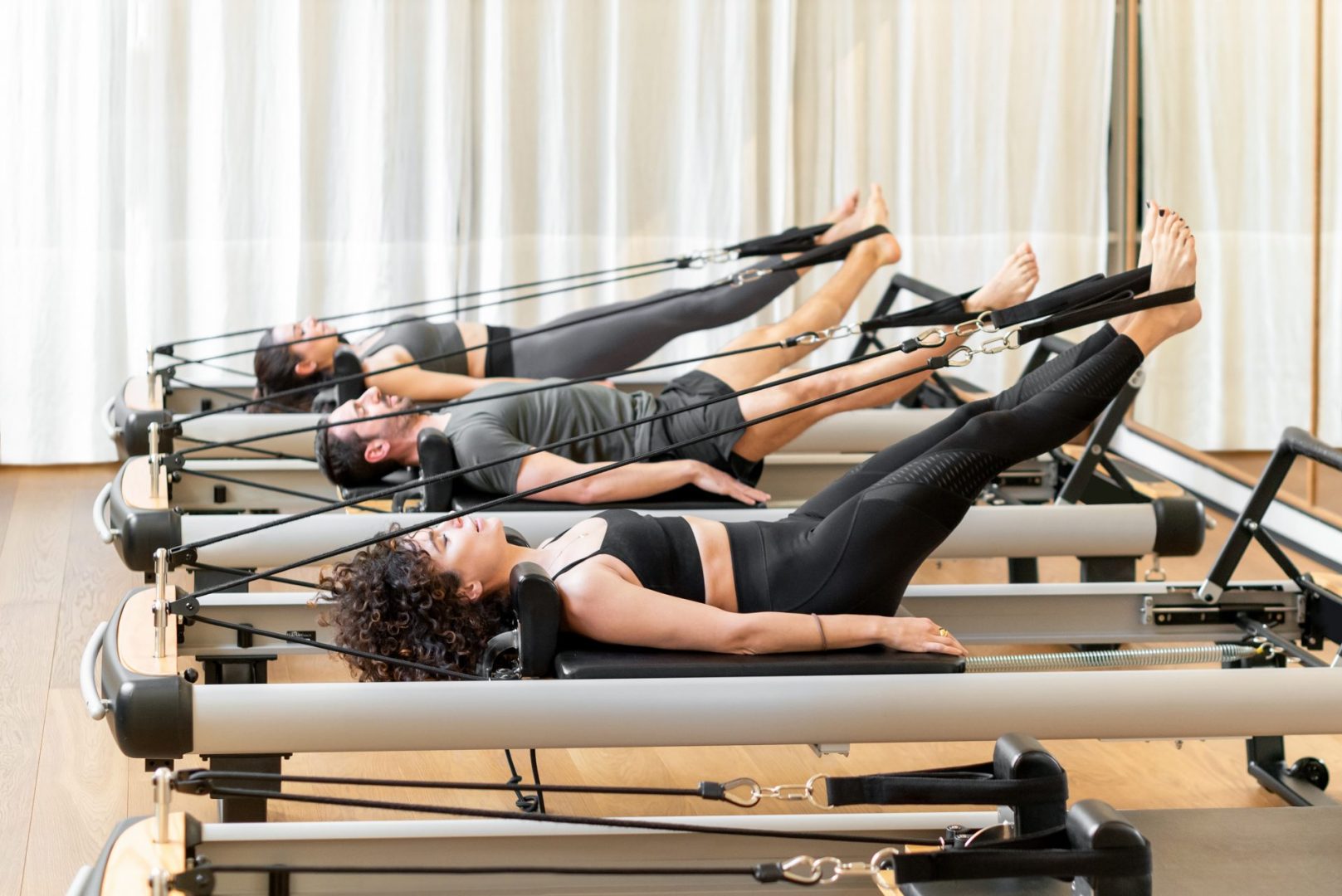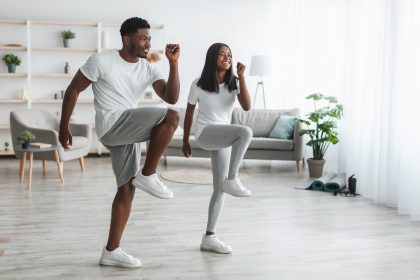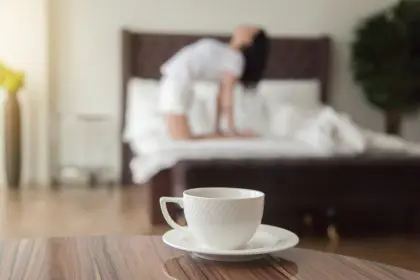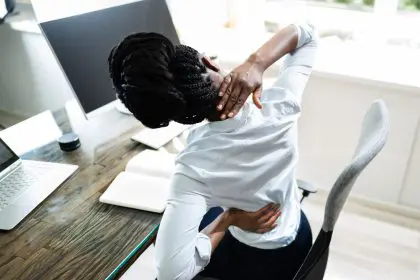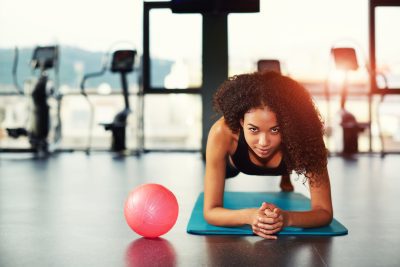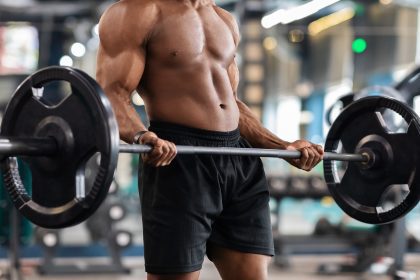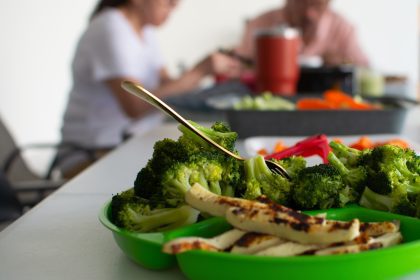The world of fitness continuously evolves with new trends and techniques, but some exercise methods stand the test of time while offering genuinely transformative results. Reformer Pilates represents one such approach, combining classical Pilates principles with specialized equipment that enhances the workout experience. Unlike trendy fitness fads that come and go, this methodology continues gaining popularity among fitness enthusiasts, athletes, and celebrities alike—and for compelling reasons that become apparent once you experience it firsthand.
My curiosity about this distinctive exercise technique led me on a month-long journey to discover whether Reformer Pilates could live up to its reputation. After committing to eight sessions over four weeks at London’s prestigious Heartcore studio, I emerged with not only a deeper understanding of this unique workout but also noticeable improvements in my physical condition and mental well-being. The experience revealed why this specialized training approach continues attracting devoted practitioners worldwide.
The unique mechanics of reformer pilates
Reformer Pilates differs significantly from the mat-based version most people encounter first. While traditional mat Pilates relies solely on body weight for resistance, Reformer Pilates incorporates a specialized apparatus that fundamentally transforms the workout experience. This sophisticated machine—the reformer—consists of a sliding carriage connected to springs, straps, and pulleys that create variable resistance levels throughout different exercises.
The reformer’s design allows for an extraordinary range of movements that engage every muscle group in the body. The sliding carriage moves along tracks, creating an unstable surface that demands core stabilization throughout each exercise. The adjustable springs provide customizable resistance, allowing instructors to modify workouts for different fitness levels and goals. Handles, foot bars, and straps expand the movement possibilities far beyond what’s achievable on a simple mat.
This equipment-based approach creates several distinct advantages over other exercise methods. The reformer provides support for proper alignment, making complex movements more accessible while reducing injury risk. The spring resistance system allows for eccentric muscle contractions—lengthening muscles under tension—which proves particularly effective for developing long, lean muscle without unwanted bulk. Perhaps most importantly, the equipment offers immediate feedback about form and alignment, helping practitioners develop body awareness that transfers to everyday movements.
Experiencing reformer pilates firsthand
Walking into Heartcore’s stylish London studio for my first Reformer Pilates session, I immediately noticed the sleek, specialized equipment dominating the space. The reformer machines, with their sliding carriages and spring systems, appeared simultaneously intriguing and slightly intimidating. Despite having practiced mat Pilates occasionally, this equipment-based version represented entirely new territory.
The initial class began with basic movements designed to familiarize newcomers with the reformer’s mechanics. Even these foundational exercises immediately revealed the method’s unique qualities. Simple movements like extending the legs or pressing through the foot bar required intense concentration and core engagement. The reformer’s sliding carriage created an element of instability that demanded precise control throughout each exercise.
As the session progressed, the instructor introduced increasingly complex movements that challenged both strength and coordination. The reformer’s spring system created resistance in unexpected directions, recruiting muscles that rarely activate during conventional workouts. Despite moving slowly and deliberately, I quickly found myself working hard—breathing deeply and feeling muscles activate throughout my entire body.
The class concluded with stretching sequences that utilized the reformer’s unique capabilities. The sliding carriage allowed for deeper, more controlled stretches than possible on a mat alone. This combination of strengthening and lengthening within a single session highlighted one of Reformer Pilates’ most distinctive characteristics—its balanced approach to full-body conditioning.
Committing to the challenge
Having experienced that initial session, I committed to attending two one-hour classes weekly for a full month. This schedule would provide enough consistency to evaluate the method’s effectiveness while remaining manageable alongside other commitments. The studio’s varied class offerings allowed me to experience different instructors and approaches throughout the challenge.
Each session followed a similar structure while introducing new exercise variations. Classes typically began with foundational movements to warm up the body and activate the core muscles. The middle portion featured more challenging sequences targeting specific muscle groups—sometimes focusing on upper body strength, other times emphasizing lower body endurance or overall coordination. Sessions always concluded with restorative stretches that left participants feeling both worked and refreshed.
The progressive nature of the training became apparent as the month advanced. Movements that initially seemed impossible gradually became manageable as my body adapted to the unique demands of the reformer. Instructors offered modifications that allowed for advancement at an appropriate pace, adding spring resistance or movement complexity as my capabilities improved.
By the halfway point, I began noticing subtle changes in both physical capacity and daily functioning. Everyday movements like climbing stairs or carrying groceries seemed easier. Persistent tension in my shoulders and neck had noticeably diminished. Most surprisingly, my energy levels remained consistently higher throughout typically low-energy afternoon periods.
Five remarkable benefits discovered
The month-long Reformer Pilates journey revealed several significant benefits that extended well beyond the studio environment. These advantages became increasingly apparent as the challenge progressed, ultimately convincing me to incorporate this practice into my regular fitness routine.
First, Reformer Pilates delivers a genuinely challenging workout that produces rapid results. Unlike some exercise methods that take months to yield noticeable changes, just eight sessions created visible improvements in muscle tone and postural alignment. The reformer’s spring system provides resistance throughout both the extension and contraction phases of movements, effectively doubling the work compared to conventional strength training that typically engages muscles primarily during only one phase.
Second, this exercise approach generates remarkable energy benefits that differ from other workout methods. While high-intensity cardio often produces an initial energy surge followed by fatigue, Reformer Pilates creates a sustained vitality boost without the subsequent crash. This balanced energy effect likely stems from the practice’s emphasis on proper breathing techniques and mindful movement, which activates the parasympathetic nervous system alongside physical exertion.
Third, the low-impact nature of Reformer Pilates makes it exceptionally joint-friendly compared to many popular exercise forms. As someone who previously experienced knee discomfort from running, I appreciated how the reformer allowed for intense muscle engagement without jarring impact. The sliding carriage eliminates the forceful landing phase that typically stresses joints during activities like running or jumping, making this an ideal option for those with joint sensitivities or those recovering from injuries.
Fourth, the practice proves remarkably effective at addressing modern postural problems like “tech neck”—the forward head posture and upper back tension resulting from prolonged screen time. The reformer’s design facilitates optimal spinal alignment throughout exercises, while specific movements target the often-neglected upper back muscles that support proper neck positioning. Combined with guided breathwork that releases tension patterns, these elements created noticeable relief from chronic neck discomfort after just a few sessions.
Fifth, the principles learned during Reformer Pilates sessions transfer effectively to home environments, even without specialized equipment. The body awareness, breathing techniques, and movement patterns become ingrained through consistent practice, influencing everything from sitting posture to walking gait. Simple tools like resistance bands or Pilates rings can replicate some reformer exercises, allowing for continued practice between studio sessions.
Who can benefit from this specialized training approach
One particularly appealing aspect of Reformer Pilates lies in its adaptability to different fitness levels and physical conditions. The adjustable spring resistance allows instructors to modify exercises for complete beginners while challenging even elite athletes. This versatility makes it accessible to a remarkably diverse range of practitioners.
For fitness beginners, the reformer provides crucial support that makes proper form achievable from the outset. The machine offers feedback about alignment and creates boundaries that guide movements, helping newcomers develop body awareness more rapidly than many other exercise forms. This supportive environment proves particularly valuable for those who might feel intimidated by conventional gym settings or group fitness classes.
Athletes and experienced fitness enthusiasts discover different advantages in Reformer Pilates. The method targets stabilizing muscles often neglected in conventional training but crucial for optimal performance and injury prevention. Many professional sports teams now incorporate Reformer Pilates into their conditioning programs to address muscular imbalances and enhance movement efficiency—benefits that apply equally to recreational athletes seeking performance improvements.
Those recovering from injuries find the reformer’s supportive structure particularly beneficial. The equipment allows for controlled movement within safe ranges, gradually rebuilding strength without compromising healing tissues. Physical therapists increasingly utilize reformer techniques during rehabilitation for this reason, appreciating how the spring system can assist movements initially then provide progressive resistance as recovery advances.
Individuals dealing with chronic conditions like back pain or arthritis often experience significant relief through regular Reformer Pilates practice. The method’s emphasis on core strength, proper alignment, and controlled movement addresses many underlying issues that contribute to persistent discomfort. The non-impact nature of the exercises allows for effective strength building without aggravating sensitive joints or tissues.
Practical considerations for beginners
Those interested in exploring Reformer Pilates should consider several practical factors before beginning. Unlike some fitness approaches that require minimal investment to start, this method typically requires professional instruction, at least initially. The specialized equipment and precise technique necessitate proper guidance to ensure safety and effectiveness.
Finding qualified instruction represents the first step. Dedicated Pilates studios typically offer the most comprehensive reformer programs, with fully trained instructors and professional-grade equipment. Many fitness centers and health clubs now include reformer classes as well, though the quality of instruction and equipment may vary considerably. When researching options, look for instructors certified specifically in Reformer Pilates through recognized organizations rather than those with only general fitness credentials.
Expect to invest in several private or small-group introductory sessions before joining regular classes. These initial sessions allow instructors to assess individual needs, teach fundamental movements, and familiarize newcomers with the equipment. This foundation proves essential for safety and maximizes long-term benefits by establishing proper technique from the beginning.
Clothing considerations matter more than might be initially apparent. Reformer Pilates requires attire that allows free movement while avoiding excess fabric that could catch in the equipment. Form-fitting athletic wear works best, with socks being either required or prohibited depending on studio policies. Many dedicated Pilates facilities require specialized non-slip socks with individual toe compartments that provide both hygiene and safety benefits.
Cost represents another practical consideration. Reformer sessions typically exceed the price of conventional fitness classes due to the specialized equipment and smaller class sizes that allow for individualized attention. Many studios offer package rates that reduce per-session costs for those committing to regular practice. While the investment exceeds that of some other fitness options, the personalized instruction and specialized equipment justify the premium for those seeking targeted results.
Integrating reformer pilates into a balanced fitness regimen
After completing the month-long challenge, my experience revealed that Reformer Pilates works most effectively as part of a balanced approach to fitness rather than as an exclusive exercise method. The practice excels at building core strength, improving flexibility, and enhancing movement quality—benefits that complement other physical activities.
For cardiovascular health, combining Reformer Pilates with moderate aerobic exercise creates an ideal partnership. The core strength and improved posture developed through Pilates enhance running, cycling, or swimming efficiency while reducing injury risk during these activities. Conversely, the endurance built through cardiovascular training supports sustained performance during challenging Pilates sequences.
Strength training enthusiasts find that Reformer Pilates addresses aspects often neglected in conventional weight training. While traditional resistance exercises excel at building maximal strength in primary movement patterns, they frequently overlook the stabilizing muscles crucial for functional movement. Reformer work specifically targets these supporting muscles, creating more balanced development and reducing injury risk during heavier lifting sessions.
Flexibility-focused practices like yoga complement Reformer Pilates in different ways. While both enhance range of motion, they approach movement from distinct perspectives. Pilates emphasizes core stabilization and precise biomechanics, while yoga often focuses on static stretching and mind-body awareness. Practitioners of both report that each discipline enhances performance in the other.
For optimal results, fitness professionals typically recommend two to three Reformer Pilates sessions weekly, ideally spaced between other activities to allow for recovery. This frequency provides sufficient stimulus for adaptation without overtraining the specific movement patterns emphasized in Pilates. Those with specific rehabilitation goals might benefit from more frequent sessions under professional guidance.
The lasting impact beyond physical changes
While the physical benefits of Reformer Pilates impressed me throughout the month-long challenge, the mental and psychological effects proved equally significant. These less tangible advantages continued developing long after the initial physical improvements became apparent.
The intense concentration required during Reformer sessions creates a natural mindfulness practice that extends beyond the studio. The necessity of focusing completely on precise movements temporarily displaces everyday concerns, producing mental clarity similar to meditation. This focused attention becomes habitual with consistent practice, gradually enhancing concentration in other activities.
Body awareness represents another psychological benefit that transfers to daily life. The reformer’s feedback mechanisms highlight subtle alignment issues and movement patterns that typically go unnoticed. This heightened proprioception—the sense of how one’s body moves through space—influences everything from sitting posture to walking gait, creating more efficient movement patterns that reduce unnecessary strain.
The progressive mastery of increasingly challenging movements builds confidence that extends beyond physical capabilities. Successfully performing complex sequences that once seemed impossible creates a tangible experience of growth and achievement. This evidence of progress through consistent effort often inspires similar approaches to non-physical challenges in work or personal development.
Perhaps most significantly, the practice fosters a more positive relationship with exercise itself. Rather than focusing primarily on external outcomes like weight loss or muscle size, Reformer Pilates emphasizes quality of movement and functional improvement. This internal focus creates a more sustainable approach to fitness that values how the body functions over how it appears—a perspective that supports long-term consistency.
After experiencing these multifaceted benefits firsthand, I’ve incorporated regular Reformer Pilates sessions into my ongoing fitness routine. The combination of physical conditioning, mental focus, and improved body awareness provides value that extends far beyond typical workout results. For those seeking an exercise approach that delivers comprehensive benefits without excessive impact or time commitment, Reformer Pilates offers a compelling option worth experiencing personally.

